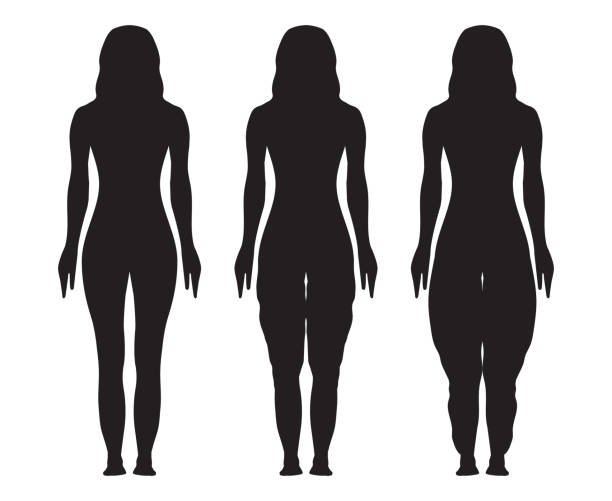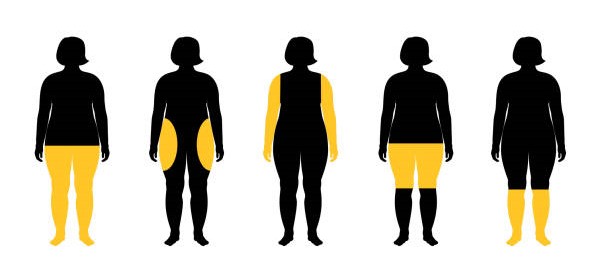
Lipoedema is a chronic, painful, loose connective tissue disorder, that presents mainly in women. It is characterised by disregulated and disproportionate fat growth, most commonly found in the legs and arms.
Lipoedema is usually exacerbated during times of hormonal change (such as puberty, pregnancy and menopause), and is resistant to conventional lifestyle modifications. It is progressive and incurable, but there are management strategies that can reduce symptoms, including conservative measures and in some cases, surgery.
Lipoedema presents with a number of different symptoms including:
* Disportionate bilateral fat growth in the legs, buttocks, thighs and/or arms
* Appearance of lumpy, nodular fat in other areas of the body, including abdomen groin, breasts and scalp
* Waist may appear smaller in proportion to lipoedema affected areas in the body
* Distinct ‘bracelet’ or ‘cuffing’ effect at the wrist and ankle may be present, as feet and hands are usually not affected
* Easily bruised with minimal trauma
* Sensation of heaviness, achiness or discomfort in affected areas
* Affected areas are sensitive to touch and often feel cold
* Soft, wobbly fat that can have a cellulite or ‘mattress’ like appearance
* Increased discomfort in hot weather
* Diet and exercise has minimal impact on the affected areas
* Reduced hair growth on affected areas

Photo: the Lipedema Project
A person’s skin appears normal and is smooth to touch. The person will have nodules of enlarged fat present underneath the skin that may feel like bean bag beans. A person with stage 1 lipoedema may experience some pain and easy bruising.
The surface of a person’s skin becomes uneven, showing dimples indentations, and shows mattress-like patterns. The amount of fat will also increase in stage 2 compared with stage 1.
A person may develop large extensions of skin and fat. These visible, large folds of skin and fat can protrude from the limbs. This can cause the legs to appear columnar. These protrusions of fat can put pressure on a person’s joints and may affect their mobility and balance. These protrusions develop due to inflammation and the thickening of tissues in the limbs. This causes a loss of elasticity, leading to reduced blood flow and lymph flow out of the fatty tissue, causing it to grow.
This stage is when lipoedema and lymphoedema are present in the body. Lymphoedema is the buildup of fluid in the body’s tissues due to a damaged lymphatic system (See What is Lymphoedema?). Lymphoedema develops when lipoedema causes the buildup of fat cells to interfere with a person’s lymphatic system

The fat is between the navel and the hips. It often covers the pelvis and buttocks.
The fat is around the pelvis and down to the knees.
The fat begins at the pelvis and continues down to the ankles. A person with this stage may have a prominent cuff of fat at the ankle.
The fat spreads from the shoulders down to the wrists.
The fat is predominantly on the calves.
The main components of lipoedema management include:
* Psychosocial support; including social connectedness and the management of expectations
* Education
* Healthy eating and weight management
* Physical activity and improving mobility
* Skin care and protection
* Compression therapy
* Pain management
When considering lipoedema management, the severity of your symptoms, the degree of complexity of tissue enlargement, your mental health status, and whether your lipoedema has progressed to lipo-lymphoedema must first be assessed.